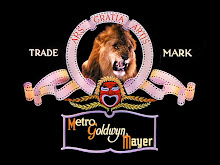"We accept her! We accept her! One of us! One of us! Gooble-gobble, gooble-gobble!"
Once you've heard this chanted by a tableful of "freaks" in Tod Browning's Freaks, it, like many of the images in the film, will be seared into your brain forever. The chant would be vaguely disturbing even if it were sincere, but is doubly so since the person they are singing it to is a circus performer who looks upon the freaks with undisguised contempt.
Browning, who had had such success with similar sordid subject matter in his films with Lon Chaney, set Freaks in a circus sideshow quite like the kind Browning worked in in his youth. Though the film stars typical dependable MGM performers like Leila Hyams and Wallace Ford, the real stars of the film are real side-show performers, the freaks of the title, most of whom lived their lives in circuses quite like this one. In Freaks, the physically distorted are the "heroes"; the villains of the film are "normal" people.
Though it was little-seen in the immediate decades after its initial release, Browning's twisted circus sideshow fable has had such an influence since that it seems downright prototypical. From Stephen King novels to Tales From the Crypt, from David Lynch's The Elephant Man to EC Comics, those images from Freaks have seared the brain of many a creator.
Freaks is the sort of unytpical MGM film which only could have been made while Irving Thalberg was in charge. No later moguls at the company would have had the reckless audacity or inclination to engineer such a film. Not to say Freaks was accepted during its time; the film was so disturbing to MGM brass, test audiences and exhibitors that it was quickly cut by 25 minutes and then taken off the market altogether. Browning's career never really recovered.
Even with much of the most outrageous material cut from the film, its not surprising MGM got cold feet. The EC-like revenge plot is still lucidly told, even with an outageously "happy" ending shot last minute and tagged on.
Freaks is available on DVD.
Wednesday, February 13, 2013
Friday, February 1, 2013
The Great Meadow (1931)
The Great Meadow is based on the novel by Elizabeth Madox Roberts which had recently been published. In it, a group of 1777 Virginians decide to start a new life in Kentucky after hearing an inspirational talk by Daniel Boone. The film follows the settlers as they make their arduous trek and start a new life in trecherous surroundings.
Even taking into account the film's faults (most of which were endemic to nearly all early sound films), The Great Meadow, directed by Charles Brabin, is a different sort of "western" picture. The focus is on the common people and their physical and emotional hardships. Silent star Eleanor Boardman, who would appear in sound films for just a few more years, is sympathetic as the lead, who leaves her family behind to marry and begin a tenuous new life. Johnny Mack Brown's one-note performance isn't as convincing, but is adequate.
The Great Meadow benefits from a nearly non-existent film score. It, like MGM's Billy the Kid, was originally shot in a widescreen process, though it's impossible to tell from the 35mm print shown now; no shots seem cropped or scanned. IMDB states the film was shot in a process called Grandeur, while the in70mm website lists The Great Meadow as having been shot in Realife.
Warning: The Great Meadow has a jaw-droppingly sudden ending which may lead you to believe the cameraman simply ran out of film then and there.
The Great Meadow isn't available on DVD, but has been broadcast on Turner Classic Movies.
Even taking into account the film's faults (most of which were endemic to nearly all early sound films), The Great Meadow, directed by Charles Brabin, is a different sort of "western" picture. The focus is on the common people and their physical and emotional hardships. Silent star Eleanor Boardman, who would appear in sound films for just a few more years, is sympathetic as the lead, who leaves her family behind to marry and begin a tenuous new life. Johnny Mack Brown's one-note performance isn't as convincing, but is adequate.
The Great Meadow benefits from a nearly non-existent film score. It, like MGM's Billy the Kid, was originally shot in a widescreen process, though it's impossible to tell from the 35mm print shown now; no shots seem cropped or scanned. IMDB states the film was shot in a process called Grandeur, while the in70mm website lists The Great Meadow as having been shot in Realife.
Warning: The Great Meadow has a jaw-droppingly sudden ending which may lead you to believe the cameraman simply ran out of film then and there.
The Great Meadow isn't available on DVD, but has been broadcast on Turner Classic Movies.
Subscribe to:
Posts (Atom)






